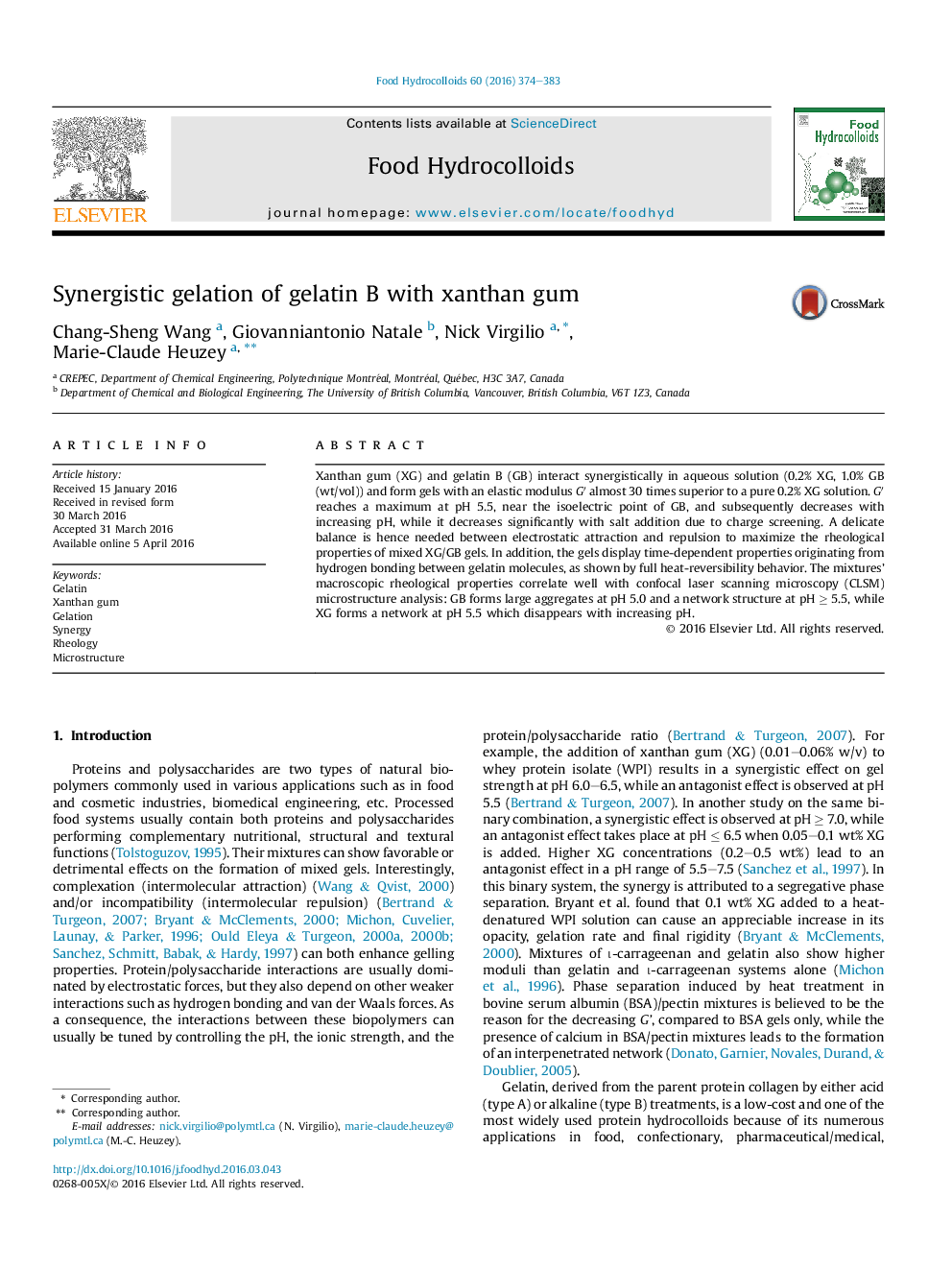| Article ID | Journal | Published Year | Pages | File Type |
|---|---|---|---|---|
| 603588 | Food Hydrocolloids | 2016 | 10 Pages |
•Xanthan/gelatin B mixtures exhibit synergistic gelling properties.•Microstructure of gels by confocal microscopy correlates with rheological properties.•Mixed gels show thermoreversible, pH and salt sensitive properties.•A gelling mechanism is proposed.
Xanthan gum (XG) and gelatin B (GB) interact synergistically in aqueous solution (0.2% XG, 1.0% GB (wt/vol)) and form gels with an elastic modulus G′ almost 30 times superior to a pure 0.2% XG solution. G′ reaches a maximum at pH 5.5, near the isoelectric point of GB, and subsequently decreases with increasing pH, while it decreases significantly with salt addition due to charge screening. A delicate balance is hence needed between electrostatic attraction and repulsion to maximize the rheological properties of mixed XG/GB gels. In addition, the gels display time-dependent properties originating from hydrogen bonding between gelatin molecules, as shown by full heat-reversibility behavior. The mixtures’ macroscopic rheological properties correlate well with confocal laser scanning microscopy (CLSM) microstructure analysis: GB forms large aggregates at pH 5.0 and a network structure at pH ≥ 5.5, while XG forms a network at pH 5.5 which disappears with increasing pH.
Graphical abstractFigure optionsDownload full-size imageDownload as PowerPoint slide
